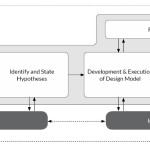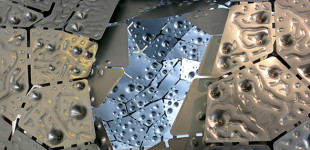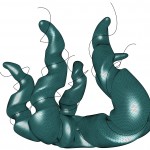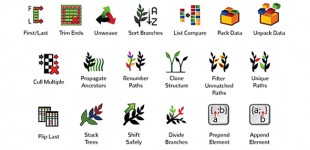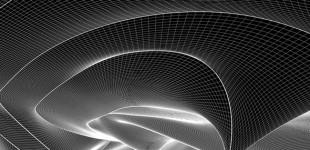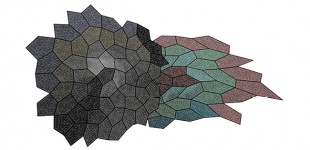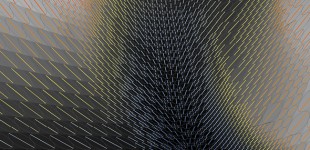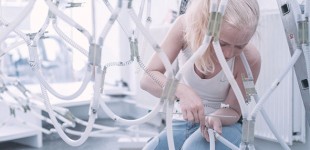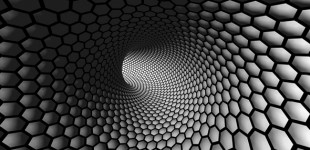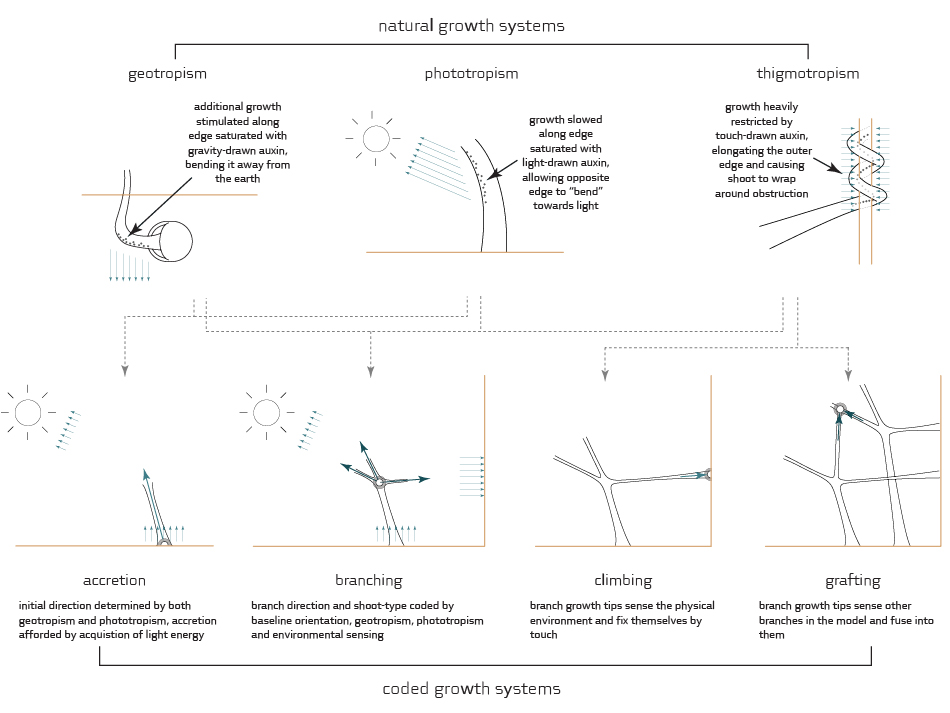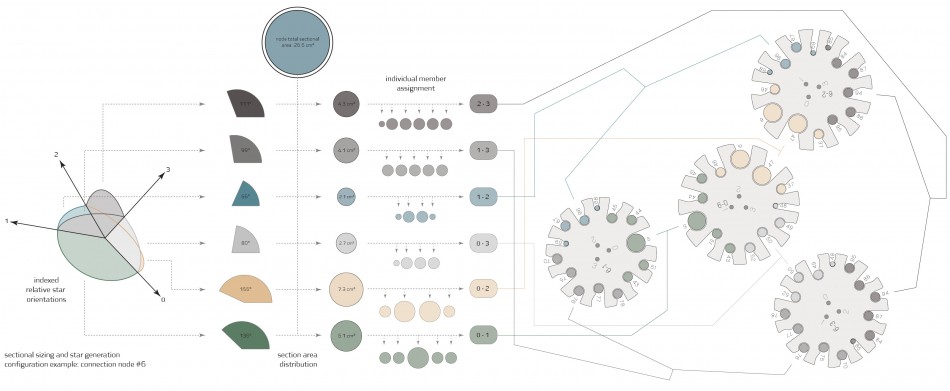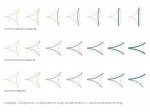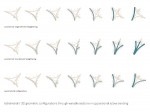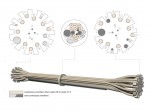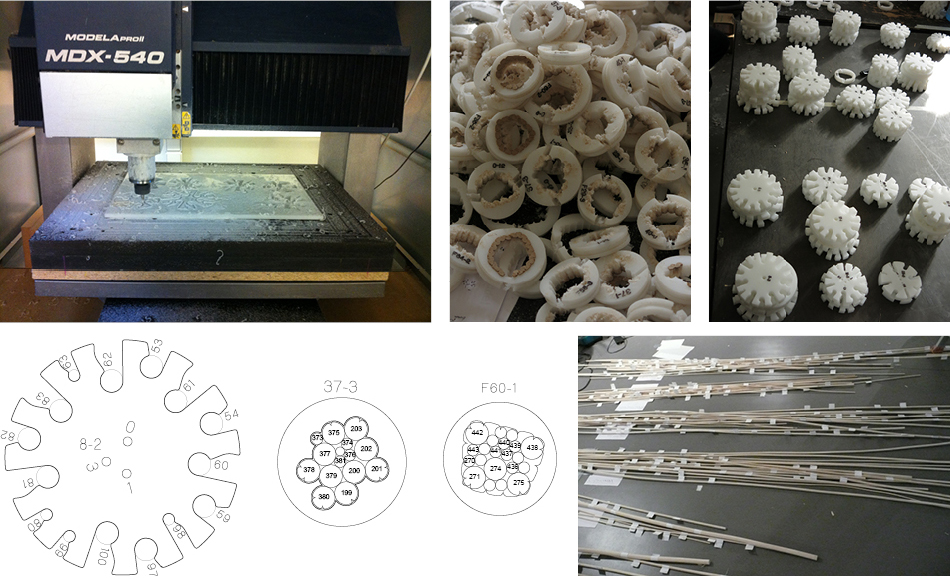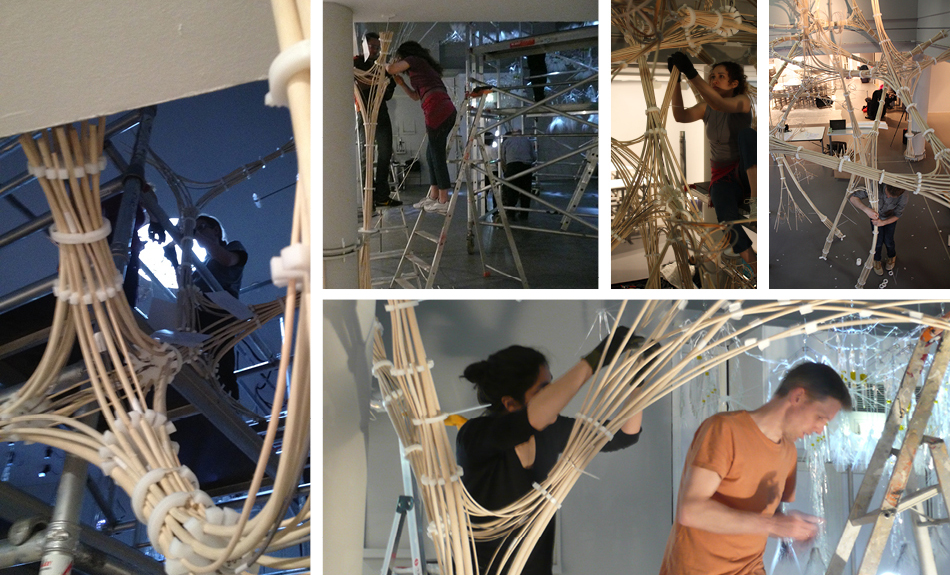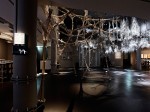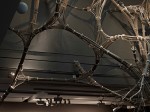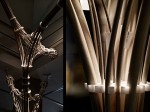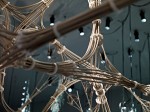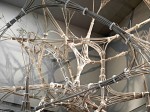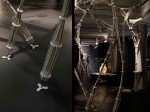bespoke geometry
The Rise
The central conceptual driver of “The Rise” is the idea of a growing architecture: it was designed for “ALIVE – Designing with Living Systems”, an exhibition curated by Carole Collett and held at the Fondation EDF in Paris in 2013. The installation has its own internal growth patterns that both guide and are guided by its composite material in a highly distributed aggregation of small members that branch, multiply, and attach back both to each other and their environment. The installation examines distributed systems as an alternative to traditional structural systems. In this alternative vision, architecture is not a static formalist proposition but is instead seen as continuously adapting to the dynamics of its surroundings while growing into form.
This model diagrammatically emulates natural plant growth processes whose properties are called tropisms. These include such environmentally triggered mechanisms as those reacting to light (phototropism), gravity (geotropism) or touch (thigmotropism). In plants, these stimuli trigger auxin, a hormone that directs new cellular growth and coordinates the emergence of the plant’s shape. For “The Rise” virtual auxins are activated in response to the exhibition space through programmed algorithmic tropisms. The installation then grows in response to its environment, extending and directing its morphogenisis according to the variations of light in the space, gravity and its contact to the surroundings, all enacted through the affordances and limitations endemic to its own materiality. Like plants the system is self-aware. It understands its behaviour under self-weight and reacts through thickening or weakening or shoots that create extra support. The installation learns from nature and mimics its ways of creating structural performance, but also expands this into new hybrid growths that are more rarely found in the natural environment, such as in the branches’s ability to re-join and create circular relationships with high structural strength.
The installation uses the pliability of rattan core – a traditional material used for furniture and baskets. Where the materials of Architecture are often understood as stiff in “The Rise” the bending capacity of the materials is leveraged as a design opportunity and a means to reach the performance of natural growth.The growth takes first place in the digital design space, where a growth algorithm with integrated simulation, calibrated to the behaviour of the material, growth towards the direction of sunlight. With constant feedback from environment and its inner tension and compression forces the computational model iterates through several states guided by the designer, and acquires a final state that is directing the production.
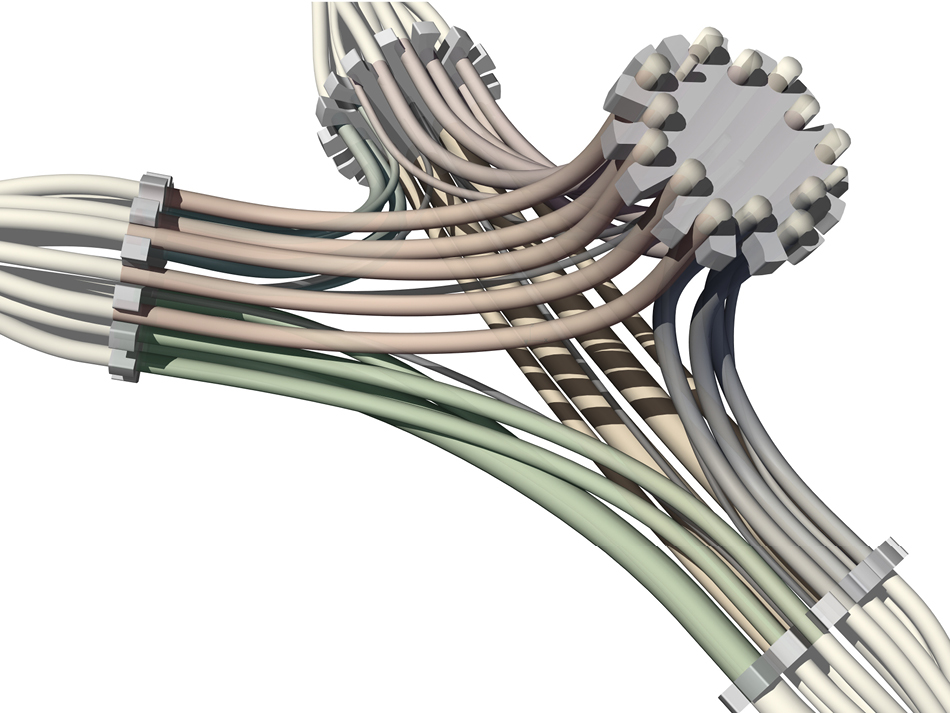
The responsive geometries are interpreted through a process that can be understood as “oppositional active bending”. Using the elastic properties of the rattan, target geometries at branching nodes are approximated through the use of variable quantities of material. Angle differentiation is achieved by increasing material quantities in longer angles relative to decreasing quantities for sharper angles. These varying levels of internal resistance allow for the branch connection system to interpret growth directions. Total material specifications for each node are determined according to the deformation of the model during growth.
Node detail resolution: oppositional active-bending material specification according to target geometry, digital fabrication drivers (click to enlarge)
- 2D oppositional active bending
- Tetrahedral oppositional active bending: strategy for variable geometries
- Mesh growth process
- Registration of spring deformation for material specification
- Packing strategy for assembly of bundled struts
Systems development, growth and assembly diagrams
The generative design model was developed such that all topological relationships between constituent elements was maintained for interpeting into the fabrication system. This included the oppositional-active bending resolution of node geometries described above, as well as the specifications of lengths and locations of each individual rattan member, and also a system for allowing the assembly to self-jig on site. Of particular interest was maintaining high levels of member continuity throughout the structure in order to ensure strength of connectivity and tightly-packed bundles in the connecting struts.
Illustration of of continuity strategy from node
All of the fabrication specification drivers were produced as a consequence of carefully managed data structures in the design model. This includes the CNC milling of bespoke set of branching nodes and bundling clamps from High Density Polyethylene (HDPE), the non-structural guide struts that enabled the system to be self-jigging, and the creation of cutting and labelling information for each individual fibre.
Digital fabrication drivers / specification systems
While the guide struts were cut and dyed and the HDPE elements CNC-milled in Copenhagen prior to installation, individual rattan elements were cut and labelled on-site. This last process was the lengthiest part of the installation process. Once all of the pieces were prepared, the structure quickly assembled.
Installation
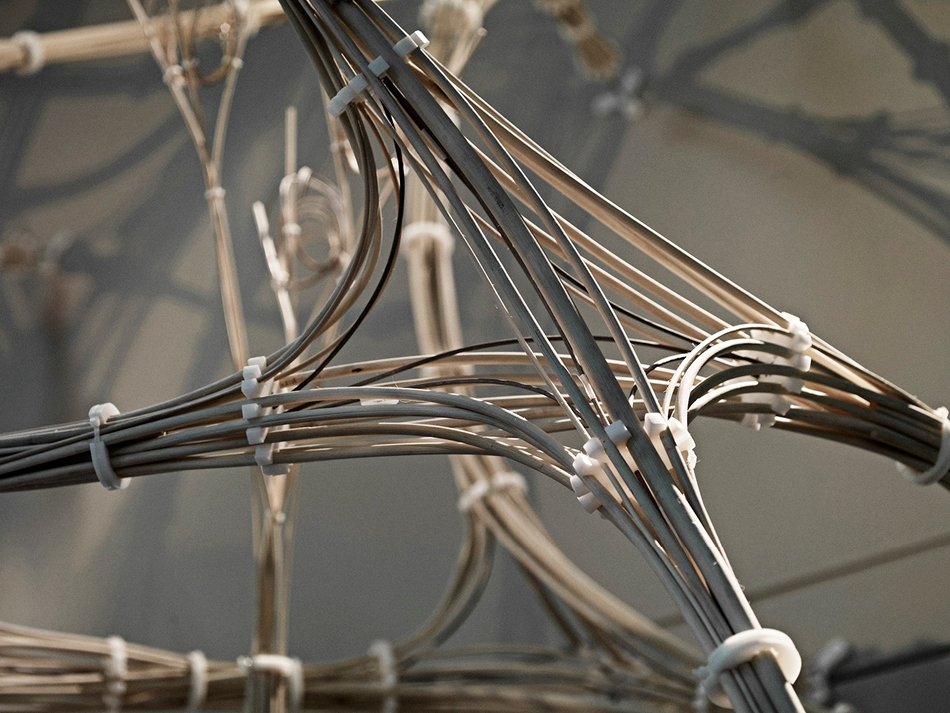
Exhibition photos
